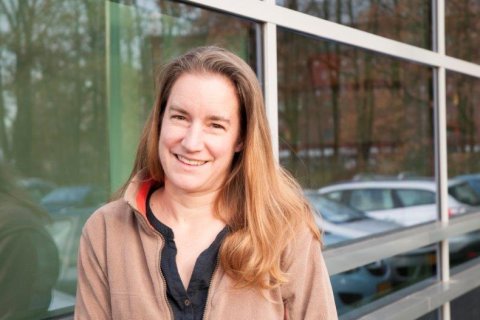More accurate diagnoses for pediatric cancer patients
Personalised Medicine and Health

Cancer is arguably one of the most complex pathological systems. Accurate diagnosis and effective treatment are often elusive. Thousands of potential variables (a mutation, shape, structure, environmental cues, chemical signals, and so on), both inside and outside a cell can trigger a molecular storm, advancing the malignancy. This malfunction in cancer cells is often due to structural variation – large-scale changes such as deletions, swapping of DNA sections and duplications and although detection can be done by whole genome sequencing, it is not yet standard in most clinics. Detecting and analyzing these chunks of DNA takes a lot of computational power and innovation.
Math is applicable anywhere
I did my studies in computer and mathematical science in Australia, where I was one of three women in a class of 50 students. Via a detour through the banking industry I arrived in the Netherlands. But finance as a goal was not sufficiently motivating for me and I felt I needed a more fulfilling end point. Fortunately, mathematical algorithms and the tools they create are all the same no matter which sector you’re in, so I got a PhD in bioinformatics in Nijmegen and then continued to work there for several years.
Hunting for variants
I arrived in Utrecht 6 months ago with the goal of setting up a new Clinical Bioinformatics Cancer Genomics Facility in the Princess Máxima Center for Pediatric Oncology. It will open in 2018. This facility will sequence the whole exome (all protein coding sequences) of every single patient in order to aid the diagnosis of their particular cancer. To put this into context: every year, there are about 550 new pediatric cancer patients who come into the Princess Máxima Center and about 200 relapses.
I currently split my time between research and the diagnostic labs at the Princess Máxima Center. What gets me up every morning, after a cup of strong coffee, is our search for structural variants in the genome. We want to discover what’s really going on in the genome during disease progression, figure out which genes are affected and how they are altered.
Our facility will sequence the whole exome (all protein coding sequences) of every single patient in order to aid the diagnosis of their particular cancer
So, how do we do this? Diagnostic samples, consisting of patient tissue are entered into a biobank, which can later transition into our research setting. Take for example a slice of tumor or a droplet of blood. It’s run through a next-generation sequencer, a relatively small yet incredibly powerful machine, which generates millions of reads – bits of DNA that are sequenced. We align these reads to a corresponding reference genome and see where they match. And then we look for variants, pieces that do not align. In addition to sequencing DNA, we also conduct different types of RNA analyses and methylation arrays (both play a role in regulating gene expression).
Using math to find that needle in a haystack
These types of studies generate a massive amount of data, making it a challenge to distinguish the normal genetic variation from what may help pinpoint an accurate diagnosis. We use existing software when we can, but because we’re also looking for larger, more complex variants, we often have to write new algorithms ourselves. Once we’re confident of a patient’s results and interpretation, we then take the raw data and turn it into something readable and understandable for both the doctor and patient.
This is what excites me most, creating new computer algorithms that can take a young cancer patient’s biology and turn it into a molecular map, that in turn, allows his or her physician to navigate the best course of treatment.
Jayne Hehir-Kwa, PhD
Groups: Patrick Kemmeren, PhD & Bastiaan Tops, PhD
Princess Máxima Center for Pediatric Oncology

